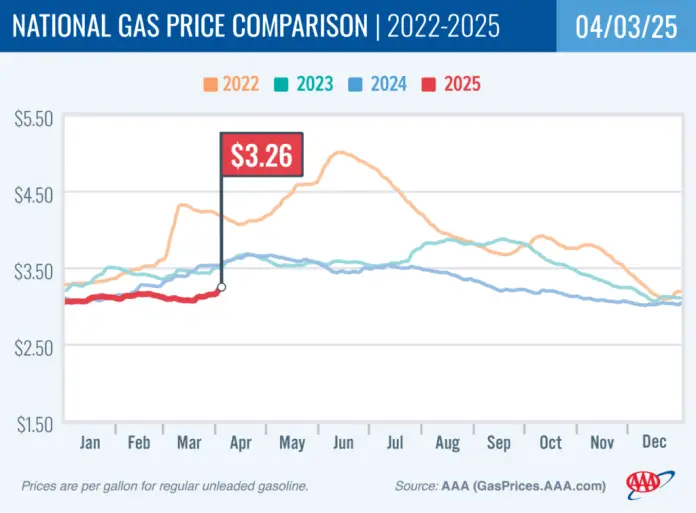Gas prices surged this past week, marking an increase of over 10 cents nationally, with the average price for a gallon of regular hitting $3.26. This rise disrupts what had been a period of stable prices, and many small business owners, especially those reliant on transportation, are keenly aware of what these fluctuations could mean for their bottom line.
The recent spike in gas prices can be attributed to a combination of factors, including refinery maintenance and the seasonal switch to summer-blend gasoline. While current prices are lower than they were a year ago—when the average was $3.54—they are still notable for small businesses that depend heavily on fuel for delivery and logistics.
For small business owners, understanding these shifts is crucial. The price increase reflects broader market dynamics as well, including a rise in West Texas Intermediate (WTI) crude oil prices, which settled at $71.71 a barrel after gaining 51 cents in the past week. The Energy Information Administration (EIA) reported that crude oil inventories increased by 6.2 million barrels, although they remain approximately 4% below the five-year average for this time of year.
“Gasoline demand decreased from 8.64 million barrels per day (b/d) to 8.49 b/d,” the EIA noted, highlighting that even as production ramped up to an average of 9.3 million b/d, the interplay between demand and supply continues to impact prices at the pump.
Small business owners who operate fleets or manage regular deliveries must consider how this recent shift will affect their operating costs. The transportation sector is particularly sensitive to fuel costs, and increases can lead to higher consumer prices for goods and services. As prices rise, businesses may need to explore options such as increasing delivery fees or reevaluating logistics plans to mitigate the impact on their finances.
In addition to traditional fuel prices, electric vehicle (EV) charging costs remain a stable alternative, consistently priced at 34 cents per kilowatt-hour at public charging stations. As small businesses increasingly adopt electric vehicles into their logistics or service operations, these costs can provide a buffer against fluctuating gas prices. For instance, areas with lower charging costs, such as Kansas (22 cents) and Missouri (25 cents), can offer more economical alternatives compared to states like Hawaii, where charging can reach as high as 56 cents per kilowatt-hour.
Location also plays a significant role in fuel expenses. According to recent data, California stands as the state with the highest gas prices at $4.91 per gallon. This has significant implications for businesses operating in or through high-price states, necessitating budget adjustments or alternative scheduling strategies to reduce fuel use or redirect shipments to areas with lower fuel costs.
For businesses that depend on road travel for deliveries, being aware of gas price trends is essential for financial planning. The AAA TripTik Travel planner can assist business owners in finding the best fuel prices along routes they frequently travel, potentially saving money in the long run.
Small businesses may also have to navigate the potential customer backlash that often accompanies rising gas prices, as consumers may be less willing to pay increased costs for goods. This may encourage businesses to focus on emphasizing their value propositions or exploring ways to cut expenses elsewhere to absorb costs.
The fluctuations in gas prices serve as a timely reminder for small business owners to regularly review their financial strategies, including budgeting for fuel costs and potentially looking into more sustainable transportation options as a long-term strategy.
For continuous updates on fuel prices and their implications, visit the original report by the AAA here.
Image Via Gas Price



